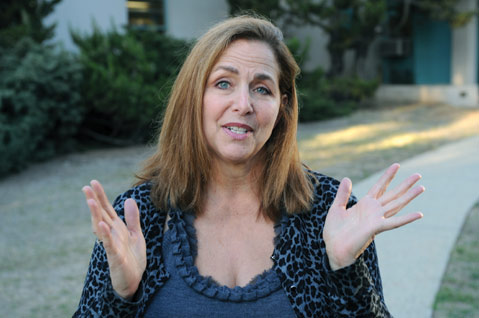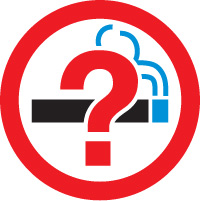The Legal Side of E-Cigarettes
Vaping Blows into Uncharted Territory

California has long led the nation in cigarette-smoking bans, but the newest craze of electronic cigarettes has so far slipped through the cracks. In the early 2000s, state laws stopped smokers from lighting up in parks, schools, workplaces, government buildings, playgrounds, and cars with kid passengers. None of these rules, however, apply to e-cigarettes. People can “vape” almost anywhere.
Conventional cigarette regulation is a mixed bag in Santa Barbara County. A secondhand-smoking ordinance was updated in 2010 that banned smoking at outdoor concerts, sports events, bus stops, beaches, parks, outdoor trails (excluding Lake Cachuma and Jalama Beach) and declared ashtrays could not be within 20 feet of workplaces.
The rules change once smokers enter city limits. The City of Santa Barbara has not updated its secondhand-smoke ordinance since 2002, and its beaches — along with Goleta’s — are among a handful in all of southern California that have not banned smoking on the sand. People are allowed to smoke on all restaurant/bar patios after 10 p.m. in the City of Santa Barbara but only on a quarter of outdoor seating at restaurants on county land.
Buellton is the one place in the county where e-cigarettes are under the same restrictions as traditional cigarettes. Its ordinance defines “smoke” as “the gases, particles, or vapors released into the air as a result of combustion, electrical ignition, or vaporization.” The catch is that people are allowed to “vape” e-cigarettes in Buellton that do not contain nicotine. According to Buellton Sheriff’s Lt. Shawn O’Grady, there have not been any e-cigarette violations under the ordinance.
At this point, bylaws leave it up to the discretion of the business owner to ban e-cig use in their establishments. “You don’t see them at Café Stella,” said Dawn Dunn, an administrator for the county’s Tobacco Prevention Settlement Program, explaining rules are often based on clientele preference. “We respond to the public. We aren’t out there creating problems,” she said.

Santa Barbara Mayor Helene Schneider and Councilmembers Bendy White and Cathy Murillo all said they have not received complaints about the use of e-cigarettes in the city. The Goleta City Council saw a presentation about e-cigarettes in October from the Council on Alcoholism and Drug Abuse (CADA). Forty-four cities and counties prohibit the use of e-cigarettes where cigarettes are forbidden in California, and the issue was given considerable attention after former New York City mayor Michael Bloomberg, as one of his last actions in office, passed a citywide ban on “vaping” e-cigarettes indoors.
As of January 1, UC Santa Barbara — and all UC campuses except UC Irvine — included e-cigarettes in its campus-wide smoking ban. Santa Barbara City College passed similar rules last August. E-cigarette use is forbidden on airplanes because the U.S. Department of Transportation has said it interprets federal regulations that prohibit smoking on airplanes to apply to e-cigarettes.
State laws would, of course, supersede city and county rules. State Senate Bill 648 — which was introduced in February 2013 and remains in committee — would require e-cigarettes to be regulated as a tobacco product and be included in existing smoke-free laws. It would also enact advertising restrictions that are similar to those of tobacco products. Senator Hannah-Beth Jackson said she expects e-cigarettes to be on the books in the near future, explaining it’s really only the tobacco and e-cig industry that’s against the bill. Assemblymember Das Williams said although he’s not “diametrically opposed” to e-cigarettes because many people seem to use them as a way to quit smoking, he would probably lean toward supporting the bill.
At the federal level, the Food and Drug Administration intends to propose a regulation that would extend the agency’s control over “tobacco products” to include electronic cigarettes, hookah, and other novel tobacco products, but the timeline is still unclear. “Further research is needed to assess the potential public health benefits and risks of electronic cigarettes and other novel tobacco products,” an FDA spokesperson said in a statement.



